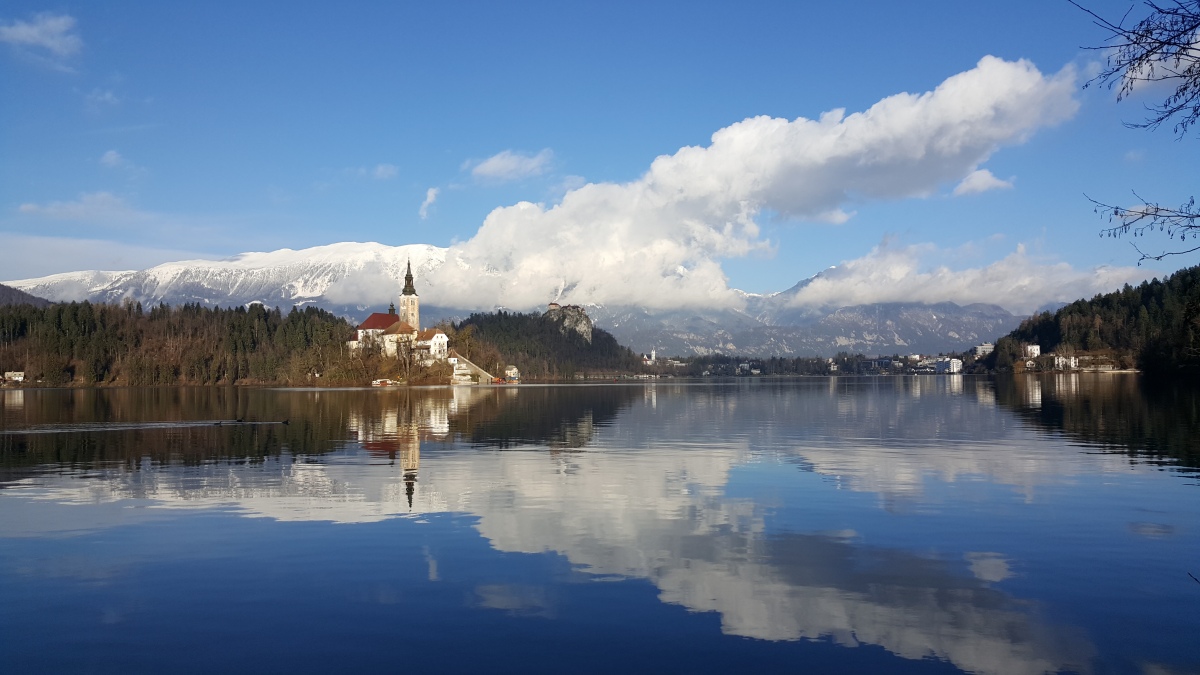Our Airbnb host was full of suggestions for our stay in Ljubljana. Near the top of her list, Postojna Cave and mountain lakes were her favorite destinations outside the city limits. Happily for us, the main bus and train terminals were just a block away and made getting around – both in the city and further afield – simple and fast. We picked a rainy day to ride the train to Postojna, figuring that we’d be cloud-free underground no matter the weather.
In Postojna, the station sits on the opposite side of town from the Cave, but the walk wasn’t far, especially since we missed the downpours. A hotel and a string of restaurants and gift shops grace the cave’s entrance and set the mood closer to a suburban strip mall rather than a natural wonder. They cater to an audience held semi-captive by the tour times (in winter just three per day).
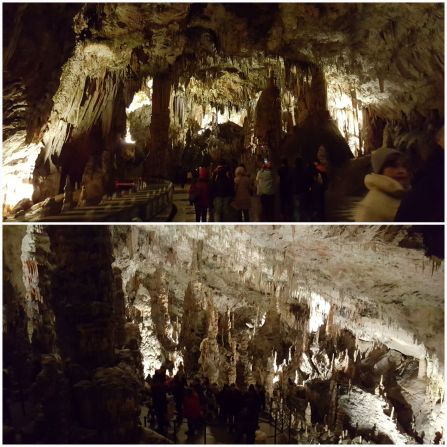
The trip into the cave originates in a relatively spare concrete tunnel. We boarded a tiny, two-seat-wide electric train. The tiny cars zoom through several kilometers of tunnels blasted into the limestone with very little space to spare. We ducked automatically at almost every curve and the recent rains meant that drops and drips spattered on us from overhead. Occasionally the man-made passage opened up into a brief glimpse of natural cave, tempting us with what was to come.
Stepping off the train for the walking section of the tour, we located our English-speaking guide and followed him uphill. It felt a little odd to be climbing while below the earth’s surface. Postojna’s large rooms meant we actually found ourselves gaining a small vista that looked across a tiered landscape of stalactites, stalagmites, and deep shadows.
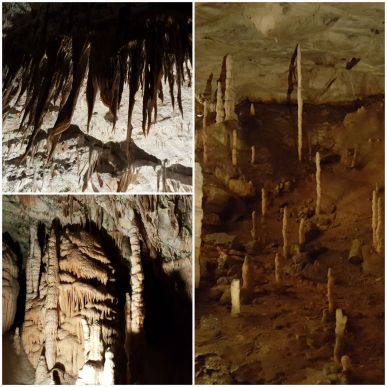
The cave was formed by an underground river flowing through the karst landscape in addition to water seeping down from the surface. The water removes much of the stone while at the same time building up spectacular cave pillars and waving curtains of stone. In some places the ceiling seeps are so numerous that the cave roof appears to be covered in spaghetti strands. After about 45 minutes of weaving our way among the most beautiful areas, we ended our walk in the cave’s concert hall. So spacious it can hold an audience of thousands it feels anything but claustrophobic.
A second train ride whisked us back toward the surface and dropped us off near the grand finale, an underground waterfall. Below us the full force of the river, still at work, was audible as well as visible. Interestingly, Postojna had electricity fairly early because the falls were utilized for a power generating station.
This cave is the most touristed in Europe, and even in the off-season the groups are quite large. Guides turned off the lights for a few moments, to give a sense of true darkness and stillness, but the reaction of so many to shout or turn on their cell phone lights doesn’t allow for much of a glimpse of either.
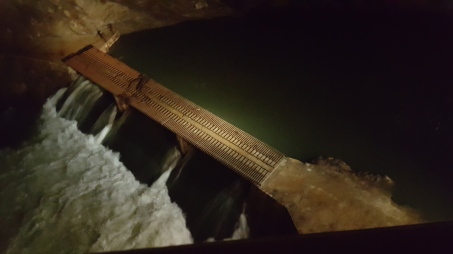
To the northwest of the capital, Lake Bled nestles in the foot of the Alps. Famous for its island church, castle, and high shoreline cliffs, we were more interested in the chance to hike around it. Despite heading to the bus station twenty minutes early, we arrived to find the bus already almost full. Even in winter the Lake turns out to be a popular destination.
The trip took about an hour and dropped us at the Bled bus station, just a couple blocks away from the shore. A small waterfront Christmas market provided lunch. The stands had warmed wine and stews to soothe the chills we faced in the day’s long shadows.
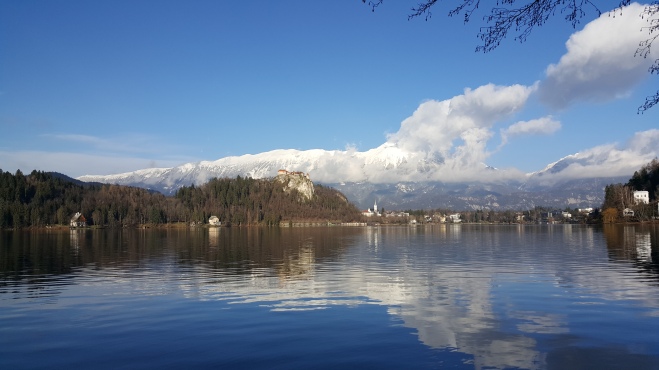
Lake Bled isn’t large and the shore path is just a few kilometers. We spent about two hours walking its circumference, but that included a fair amount of view-admiring and photographing. The portions nearest to town are the most built up, crowded with hotels and restaurants fighting for the spot with the best view.
Though the most recent snowfall at lake level had already melted, frost covered the ground in the shade. Thankfully we had donned our heaviest clothes, and kept moving. We were fortunate to see the lake on an almost-still day, the reflections only faintly blurred. Two or three restaurants on the far side of the lake attempted to make some money from chilled visitors, hawking more mulled wine and roasted chestnuts.
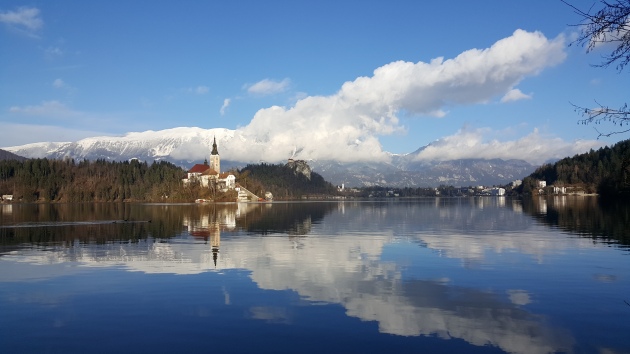
It was hard to find a bad viewpoint anywhere around the lake. The castle dominated our photos at the start, but soon we drew closer to the island church. Boat tours cost 12 euros per person, so we stuck to land. Plus, it is hard to take pictures with the island in them while on the island.
We stayed for sunset. The sky faded into different shades of blue rather than turning rainbowed and the mountains darkened into the night. My fingers and toes were thoroughly chilled by now so to cap off our walk we found a cafe serving warm coffee. This helped us pass the time until the return bus to Ljubljana. Descending back to the city, a layer of fog thickened around us and we were grateful to have traveled back before the road disappeared from sight in the dark clouds.
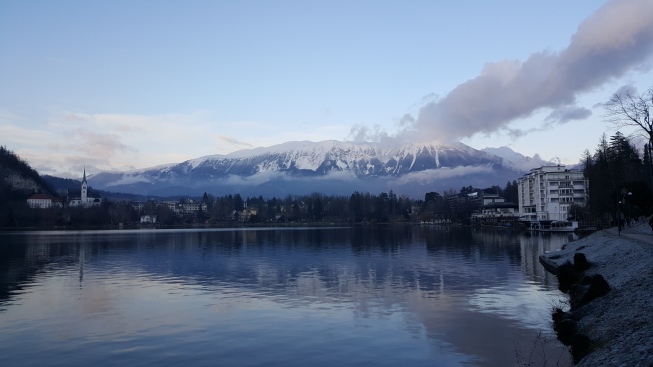
Slovenia’s natural spaces are beautiful, even in winter, and wonderfully easy to access via public transit. I’d love to return in a season without snow to do more mountain hiking and when the warmth makes the coastal region more attractive.
